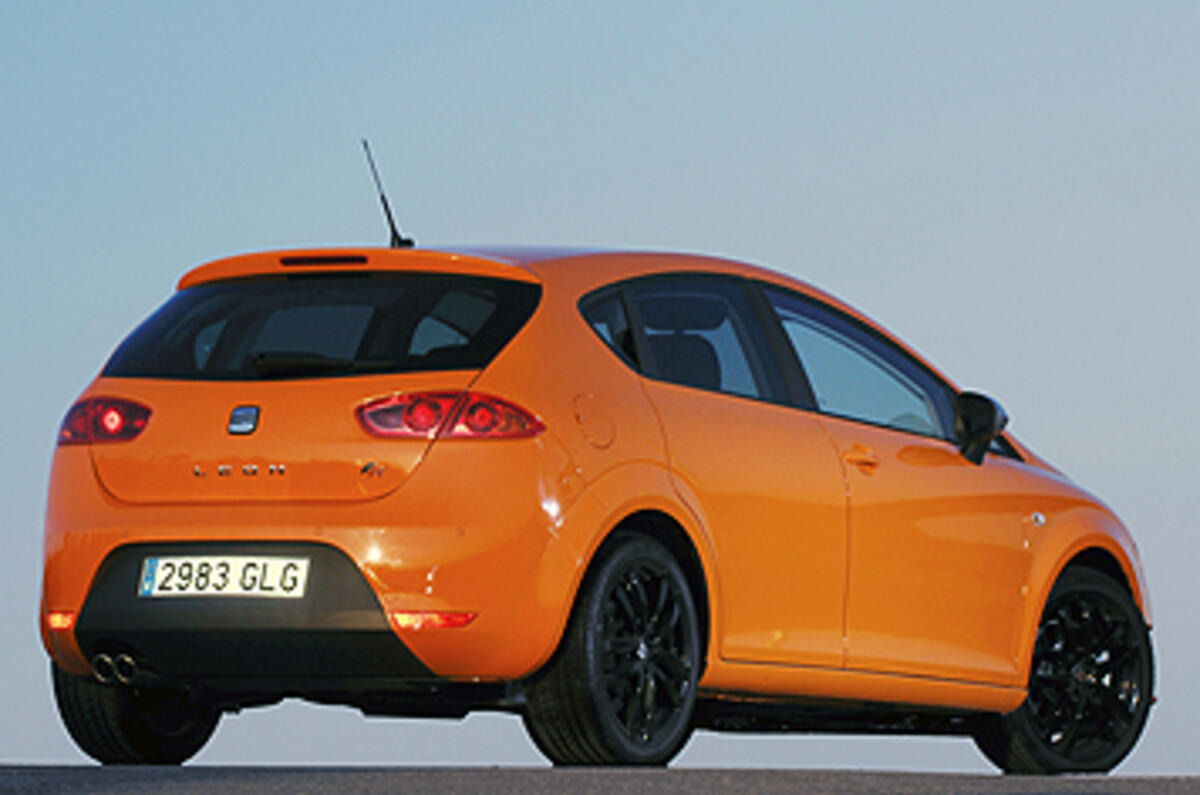What is it?
This is the new Seat Leon FR. Though the facelift is barely noticeable on the outside, the changes under the skin are much more significant.
A new turbocharged 2.0-litre engine provides 208bhp and 207lb ft of torque, while improving on the economy and emissions of the 197bhp engine in the previous Seat Leon FR.
The chassis in the Leon FR has also been tweaked and now has 20 per cent softer springs, a 15 per cent softer front anti-roll bar and a 7mm lower ride height.
Seat has also introduced a kind of electronic limited-slip differential, similar to the systems used in the Alfa Romeo Mito and the new Golf GTI. XDS works together with the ESP (now standard across the range), and uses electronics to brake either of the driven wheels if it loses traction, while diverting the engine’s torque to the other driven wheel, giving a similar effect to a mechanical limited-slip differential.
A number of changes to the interior include a new steering wheel and a more modern-looking dash with a five-inch touch screen.
What’s it like?
We tested the six-speed manual Seat Leon FR and found it faster and sharper to drive than the pre-facelift model.
The new engine hasn’t just got more power, it’s also lighter than the last unit and offers its maximum torque up from just 1700rpm right through to 5200rpm. Though the benefits of the new engine when tackling your favourite B-road are plentiful thanks to a sharper turn-in and more linear power delivery, in truth the biggest advantage is the engine’s all-round flexibility. You’ll rarely, if ever, be without ample acceleration.
The chassis is also an improvement. It still feels firm over speed bumps and can fidget over constantly uneven road surfaces, but the newly tweaked chassis offers a more serene ride overall and doesn’t detract from the Leon’s abilities as a hot hatch.
And you’ll want to try out those abilities whenever you can, because despite the levels of torque this is still a hot hatch that saves the best for the upper echelons of its rev range, where it offers its best noise and responses. Even the XDS system is a welcome addition to the Leon FR, helping to drag the car out of corners better without intruding noticeably on the driving experience.
Should I buy one?
Absolutely. The Seat Leon FR might lack the image of the Volkswagen Golf GTI, and is still hampered by very poor forward vision thanks to the wide, raked-back A-pillars but, given that the two models share the majority of their technology and the Leon is the cheaper car, there’s very little to dislike.
The new Seat Leon FR is an improvement in performance, affordability and usability over the previous Leon FR, and it will do everything you could want a hot hatch to do.































Join the debate
Add your comment
Re: Seat Leon 2.0 TFSI 211 FR
Re: Seat Leon 2.0 TFSI 211 FR
And if you have a 2.0 TFSI re-mapped by a reputable tuner, such as Custom Code, for £300-ish you'll have a reliable 260bhp/260lb ft, plus improved MPG (during 'normal' driving). Also, according to Which?, it seems that SEATs are actually more reliable & better built compared to VWs. So, aside from the issue of sexier cabin design with better-quality materials, why spend £25k on a GTI?
Re: Seat Leon 2.0 TFSI 211 FR
I am a big fan of the new MKVI VW Golf, but even I have to admit that if I was going for a performance version it would be Seat who get my money. Looks like they have created a very attractive price here at a great price. £18k is the sort of money you would pay for a 110TDI SE Golf with a few options or a 160TSI at a push, so the fact Seat have managed to get a GTI spec car for that price is very impressive. The price VW are asking for the latest GTI is crazy, and its not all that different from the MK5. The icing on the cake is the fact this is less common and better looking than a Golf.